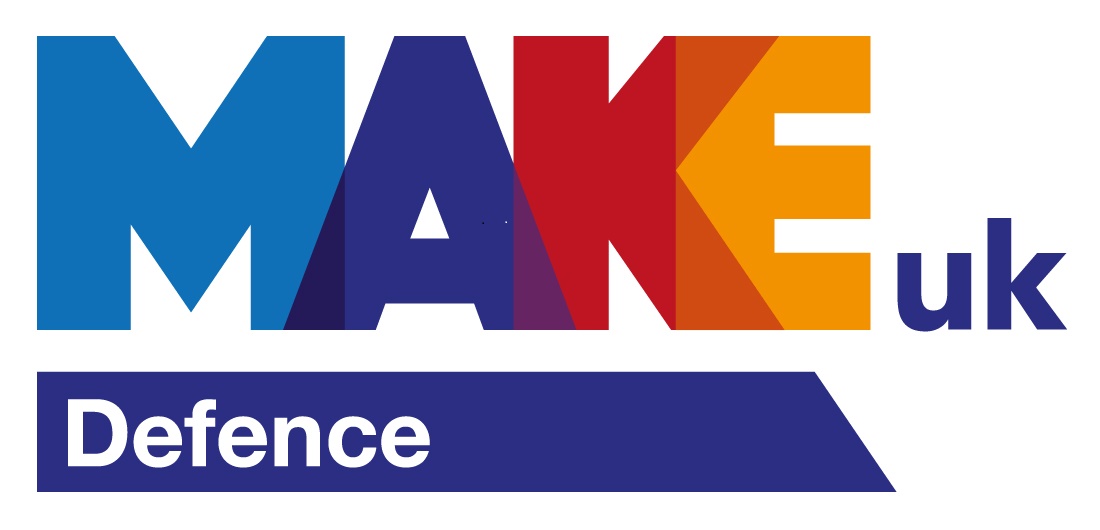Defence marketing in 2021: A comprehensive guide to digital strategies [updated]
25.08.20


25.08.20

The continuing cancellation of events due to COVID-19 means that defence sales and marketing teams will have to find alternative ways to market their products. Here we set out a comprehensive list of digital strategies that marketing and sales teams should look to invest in next year to ensure that they can achieve sales growth in a difficult business environment.
It has been a difficult year for sales and marketing teams in the defence market. Travel restrictions and event cancellations have meant that the usual avenues for promoting products and solutions have been cut off. No more in-person client meetings, no more product demos at defence exhibitions.
We’ve all felt the impact of this and with COVID-19 still present in most nations, it is unlikely to change anytime soon.
Other B2B and B2G sectors have been able to adapt quicker to the new virtual world we live in, especially those that deal with software rather than hardware. These sectors – Software as a Service (SaaS), for example – are also leaders in newer digital marketing strategies and have had a head start in this area for several years.
Defence companies in particular have struggled with digital marketing, in part due to the sensitive technologies that companies offer and the subsequent restrictions (or simply a reluctance) to openly talk about them in public.
But defence is also a very traditional market, which often relies more heavily on personal connections and relationships when compared to many other sectors. While the technologies that are being developed in the defence industry are cutting edge, the underlying marketing and sales practices are often not, and there is limited use of the latest marketing technologies and methodologies.
The COVID-19 pandemic is likely to change that, especially as travel restrictions to countries such as the US, India and South America continue for the foreseeable future. Companies will have to rely far more on digital technologies, channels and strategies to aid sales and marketing. The companies that don’t adapt will suffer.
We’ve compiled a list of areas where we believe companies should invest time and resources to ensure they are able to expand their digital presence and convert that into continued sales growth in these challenging times.
2. Avoid webinars, invest in targeted digital demos
3. Emphasise value for money and enhanced capabilities in product messaging
4. Know your web metrics, and optimise for SEO
5. Set up a dedicated digital content studio (on a budget)
6. Post regular and varied content on social media
7. Invest in new digital advertising channels
Creating relevant, engaging and educational content is a key growth driver when it comes to expanding your digital brand and online footprint. Most prime defence contractors now generate content that is additional to press releases, which includes long form whitepapers, multimedia feature stories, case studies and blog posts, as well as video and podcast series.
These companies often have dedicated editorial staff and SEO copywriters that can generate content on a regular basis, or to meet the demand they outsource to content marketing companies (something we do at Defence Media). A comprehensive content plan is key here, as well as repurposing content across formats.
This content can then be shared on social media and may also get additional coverage in national or trade press, as well as specialist blogs. More content also means more chance of being seen on Google search results, building organic traffic further (see ‘Know your digital metrics’ below).
Whether your customer is another business (B2B) or a government agency (B2G), many of the buyer characteristics and personas are the same. In both B2B and B2G, the buyer is an expert and wants to acquire more information on products and solutions that can solve the challenge they are facing. In today’s digital world, and without events, potential buyers are far more likely to seek out that information online before they move onto a more detailed purchase/procurement effort.
You should regularly ask yourself: am I publishing fresh website content that educates and informs our prospective buyers, or am I just relying on the same sales collateral such as data sheets and old marketing copy? If it’s the latter, you have an issue.
A well-executed content marketing strategy, with additional SEO optimisation (see below), will ultimately generate additional traffic to your website, build social media followers, and generate better quality leads. It will also build trust in your brand and show that you’re an expert than can be called upon when a customer faces the challenges that you can solve.
We’ve reached a point of so-called “Zoom fatigue” after many months in national COVID-19 lockdowns, and for many of us the idea of sitting through an hour-long webinar via Zoom is a nauseating prospect. The marketing and sales value of gated webinars is limited and is on a downwards trajectory; companies often experience low viewer/sign-up numbers and even lower leads generated as a result.
For the time it takes to prepare, plan and execute a webinar, it is simply not a good use of sales and marketing time. Why bother?

Please, not another webinar
We would argue that sign-up webinars are not viable for top-of-funnel brand awareness campaigns, which is more suited to blogs, short videos, and social media campaigns. Instead, webinars must be used for qualified leads that are further down the pipeline. These webinars (or rather what we’d call digital demos and expert Q&As), should be more customer focused, more interactive, and limited in audience.
We will also likely see more investment in areas such as virtual reality, mixed-reality and augmented reality, which will enhance the experience of digital demonstrations. If a potential customer cannot walk around a real vehicle, why not give them a virtual representation instead? The possibilities of using Oculus Rift VR goggles or a Microsoft HoloLens are only just being explored, and we are likely to see far more utilisation in the future.
Even without such technology, we are seeing defence companies conduct more live demonstrations of products using streaming services. You should ask yourself, how can we demonstrate our product virtually?
While defence has managed to ride out the initial COVID storm over the short term, the long-term defence spending picture is likely to be less rosy.
The huge economic impact of the COVID-19 pandemic for governments across the world as a result of reduced economic output and government funded stimulus programmes will mean that national spending will have to be reduced to address government debt. Defence is usually one of the first sectors to take the hit, while social areas such as education and healthcare are kept safe.
Even the world’s top defence spender, the United States, is expected to cut or reduce some programmes to ensure that other key priorities can be funded going forward.
What does that mean for defence companies and marketing teams? While budgets are constrained, buyers will be looking for solutions that offer value for money and can contribute to overall cost savings. That might be because the overall solution cost is cheaper compared with competitors, or that it provides more capability at a similar price point to comparable systems.
Either way, this needs to be focused on in marketing material as more companies compete for fewer contracts.
B2B and B2G marketing, especially in the defence market, is often conservative and relies on face-to-face meetings, existing relationships, or word of mouth. While this will still be important in the post-COVID world, it will have to be supplemented by data-driven marketing approaches that are underpinned by quantifiable analytical data.
This is particularly important for areas such as search engine optimisation (SEO) and ensuring you drive traffic to key pages on your website.

But why is SEO important in defence?
It’s a good question, and unfortunately many people don’t understand SEO, and as a result they dismiss it.
The simple answer: it will drive more traffic to your website where potential customers can view your solutions and submit their details through a contact form. Most B2B and B2G buyers will likely do some kind of Google search (or other search engine) in their buying process, especially in the early stages. Don’t you want to be at the top of those search results?
The top result on Google is ten times more likely to be clicked than the link in 10th position, according to SEO specialists Backlinko.
To understand if your SEO strategy is working, it is also advisable to be on top of your website metrics. Do you know how many people are visiting your website each month? Are you getting visitors from your target markets? What’s driving traffic to your website and how do you replicate it for even more growth?
If you’re going to rely more on digital marketing strategies, then these are questions that you must know in order to make informed marketing decisions. Understanding digital metrics and interpreting that data is underutilised in defence marketing and sales, despite it being a sector that loves utilising data!
This sounds like it might take up a hefty part of your marketing budget. Don’t worry, it won’t.
The idea here is that you dedicate a space inside your office where you can easily record videos or some audio and turn it into quick social media content. You can buy a decent SLR camera for video, some lavelier microphones, and a budget LED light for around $1,000-$1,500.
Obviously you can spend much more, but if you’re just starting out on your digital content journey then this is a good way to start. You can even use this space to train employees on how to use the equipment and how to conduct themselves in front of camera for external media interviews.
Once you make that initial investment, you can analyse the results of your initial content offerings and start thinking about how you want to scale up. This could be investing in better cameras, microphones, and lighting, and even live broadcast capabilities for streaming presentations, demos and Q&As/AMAs.
Most marketers know the value of social media, but struggle with the execution. It’s important to populate your social media feeds regularly with a varied amount of content that also includes media such as photos and video.
What’s also important is ensuring that you’re posting a varied amount of content that isn’t just a product overview, which can get boring pretty quickly.
Social media posts can also include company developments, VIP visits, job postings and employee testimonials. The website Awareness Days is also a fantastic asset for planning ahead for light-hearted and fun posts to mark an awareness day, such as National Dog Day on 26 August (put it in the diary). Employees should also be encouraged to be positive about company and product developments on their own social media, which can then be shared.

For the defence industry, LinkedIn is the preferred platform as it is a professional network, and a higher percentage of decision-makers and executives use it. Other social channels are seen as optional extras and are ultimately less effective as a B2B and B2G marketing asset.
Many top companies have dedicated social media managers to monitor feeds, develop strategies, and post on multiple channels, but this is often a luxury that marketing teams cannot afford. If you’re on a budget, try to plan a content schedule using a social media aggregation tool (Hootsuite, Sprout Social, Loomly) and utilise the content strategy that we talked about in the first point of this blog.
If that is still too much, it might be one aspect of your digital marketing that you choose to outsource to an agency.
The defence industry has traditionally relied on trade publications for advertising. In recent years we have seen a shift from print advertising to banner advertising on websites, which provides more verifiable data on how many people (but not necessarily who) saw and clicked the advert.
The effectiveness of banner adverts is open for debate, but if you’ve seen positive outcomes using banner advertising, then it’s safe to say that is a strategy that should be continued.
But it is also worth experimenting with other advertising options, particularly when it comes to social media and pay-per-click (PPC). Google Ads (which is a PPC service) can be an effective way to get yourself to the top of Google search results in target markets, especially for keywords that you’ve identified as being relevant to your product or solution, as well as your brand. PPC also allows you to leapfrog competitors that might hold the organic top ranking. But be wary, competitors can do the same to you!
With an effective PPC strategy, you can also retarget your website visitors and display ads to them as they move around the internet (but you need sufficient web traffic to do this).
LinkedIn also has a powerful advertising functionality, which allows you to target your ads to relevant companies or organisations, as well as specific job roles. While privacy regulations do not allow you to target specific individuals, it is possible to shape a criteria that closely matches your intended audience. LinkedIn’s Insight Tag (which is code added to your website) also allows you to retarget your website visitors through the social channel, as well as other marketing options.
When you publish a new whitepaper or piece of content, it is worth considering a LinkedIn advertising campaign that targets your intended audience for greater brand awareness and possible lead generation. The only downside to LinkedIn advertising is its high cost, which must be factored in when considering the placement of ads (although this is often less than banner advertising on third-party websites).
There are a myriad of digital strategies that you can explore when it comes to marketing, and the more you effectively execute the more likely you are to be successful. That’s not to say that you have to implement all these points immediately; the beauty of digital marketing and advertising is that you have full transparency of data to see what is working and what is not, and scale it accordingly.
A word of warning, however. None of these digital strategies are easy, and ultimately they will take up resources including time and money. They are not quick fixes for event cancellations, and will require a change of mindset if you want to see long-term results that will align with your business goals and objectives. The digital world is certainly not easy, and as more companies adjust their marketing and sales strategies towards the online space, expect the competition to get even fiercer.


Signatories of:


Members of:



Innovation House
Molly Millars Close
Wokingham
RG41 2RX